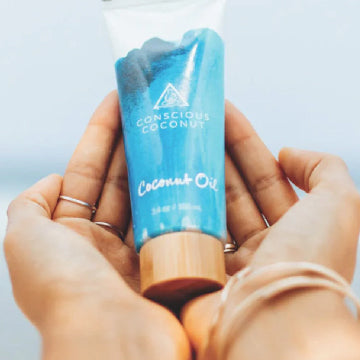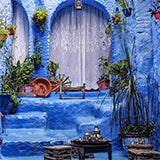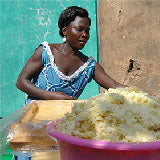Be Fair with Your Chocolate This Valentine's Day

Cocoa Farmer with basket of cocoa pods. Photo courtesy of Cargill.
The association between chocolate and Valentine’s Day was established in the 1860s by Richard Cadbury, the founder of the popular British chocolate company. Marketing genius that he was, he began packaging Cadbury confections in fancy heart-shaped boxes that could be used to store keepsakes (think love notes) for future use. Apparently, he was also a leader in the sustainability movement. LOL.
Chocolate’s origin - the cocoa bean – dates back thousands of years ago as a crop that was developed by ancient South American cultures like the Aztecs and Mayans. The bean was ground up and mixed with hot water to be drank during religious ceremonies. But there was nothing sweet about this elixir until the commodity of sugar came around in the 19th century and decided to shack up with cocoa. This union made hot chocolate a delicious “aphrodisiac” treat enjoyed by the European social elite.
When the Industrial Revolution came around, it turned cocoa powder production into an affordable commodity. This was also around the time when Joseph Fry figured out that if you add cacao butter to cocoa powder, you have solid chocolate, hence one of my basic food groups. (LONG LIVE JOSEPH FRY!)

Aside from being a mouth wateringly delicious and rapturous experience, many health experts say eating chocolate boosts serotonin in the brain and acts an anti-depressant as well as it releases endorphins in the body, elevating mood.
Today, the cocoa and chocolate market is valued at $130 billion and will continue to grow another 5% by 2027. Cocoa beans grow in high temperatures with moist air and are found in the forest regions of Africa, Central and South America and Asia. So you can only imagine all the farming power it takes to grow and maintain these crops. Unfortunately, since the demand is so intense for chocolate products, companies can easily exploit the cocoa farming communities to produce this crop as fast and as cheaply as possible. This can extra-long working hours, little to no pay, and may include child labor.
That’s where the business of fair trade comes in. This global movement makes sure the livelihood of cocoa farmers is put first. Fair Trade not only ensures that farmers earn a fair wage that will empower them and their communities, but that they are working in safe conditions, not being taken advantage of and treated with respect and dignity.
When you buy your loved ones some chocolate this Valentine’s Day, do your fellow global citizens and planet a favor by opting for a fair trade option. Here are some options for you to choose from:
Maya Moon Love Collection Tasting Box $15 Includes 4 artisan, dark chocolate truffles in a beautiful gift box:
- Lavender Rose
- Raspberry
- Strawberry Champagne
- Aphrodisiac with damiana and maca
The purchase supports organic farmers collectives in Peru and local, sustainable beekeepers.

Raaka Rose Cardamom Unroasted Dark Chocolate Bar $6
To make this bar, Raaka uses gently steam Tanzanian cacao over rose petals and cardamom, conjuring a luscious and dreamy floral bar. Celestial, ambrosial, transcendental. Damn.

Handcrafted with Ecuador's finest cacao, this collection of luxurious, award-winning chocolate helps educate children in Ecuador and aids in the livelihood of the country's farmers. Featuring milk chocolate with coffee nibs, milk chocolate with confetti and dark chocolate, this delicious sampling of squares makes a lovely gift.















